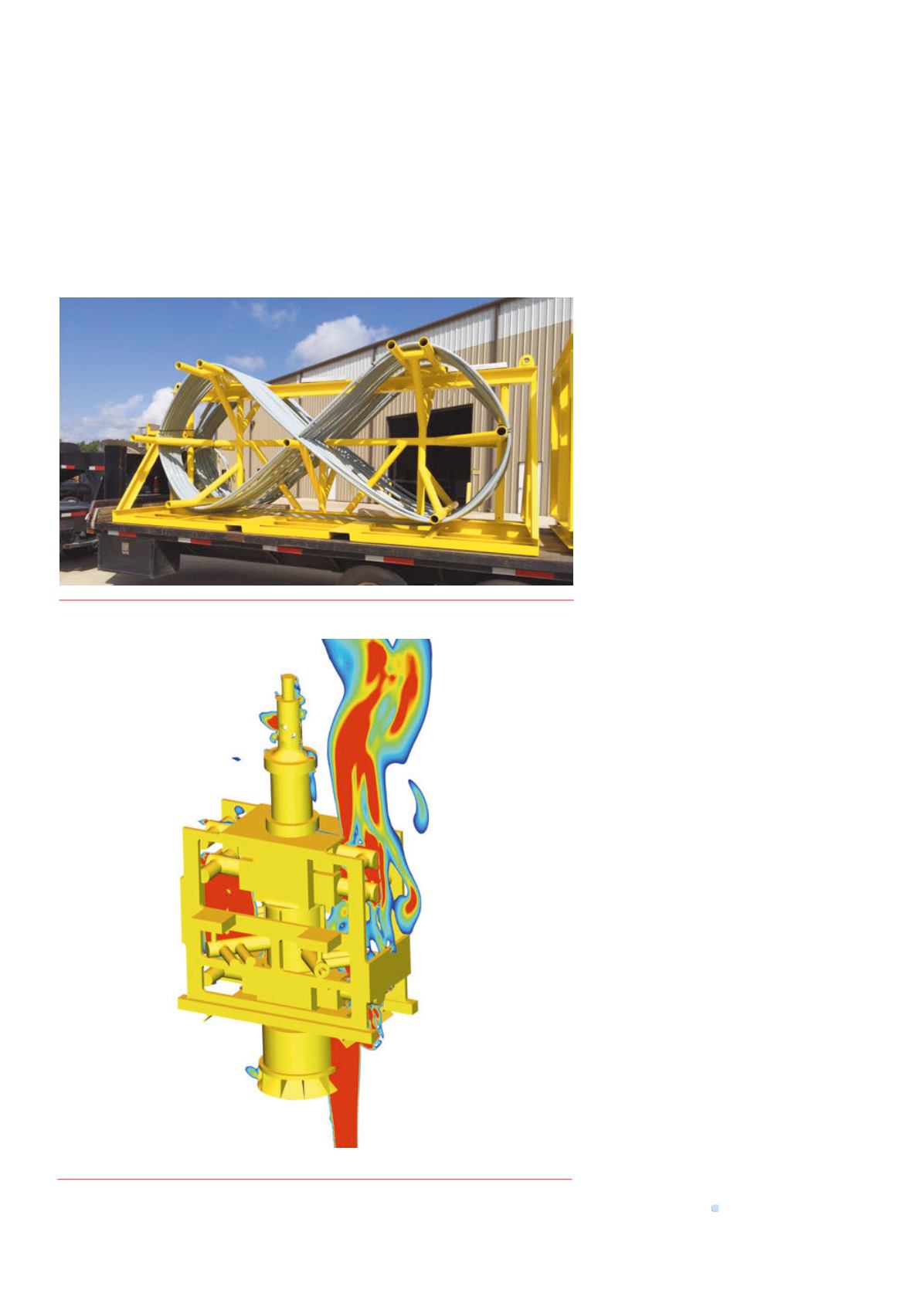
54 |
Oilfield Technology
December
2014
efficiently and effectively configure the stack specifically for each
situation. Sea‑bound deployment is not necessarily the optimal
method, and the time taken to break down a stack to prepare it for
air transport is valuable time wasted.
AberdeenandSingapore: strategic locations
From a deployment perspective, these locations give the best
geographical coverage of the world’s subsea fields, with easy access
to both air and sea ports for rapid response. By having the two stacks
geographically located in the northern and southern hemisphere
an enhanced level of response to the client’s well site is provided.
Having the flexibility to deploy global well control protection from
two locations mitigates any potential delays due to deployment
constraints, and adds another level of assurance to the operators’
drilling programmes.
Plumemodelling
In general, plume modelling is an engineered analysis aimed at
predicting the path and destination of the hydrocarbons released
from the seabed in the event that a loss of well control results
in a subsea release. In particular, whether or not the arrival of
hydrocarbons at the sea surface will compromise efforts to bring the
well back under control by creating a flammable
or toxic hazard, or otherwise impeding efforts
to cap or kill the well. Wild Well’s Advanced
Engineering group used computational fluid
dynamics and other analytical methods to
model the subsea release from the seabed,
through the water column and beyond into the
atmosphere. However, there is always that desire
to confirm that modelling matches reality. Given
the obvious issues around physically modelling
an actual subsea release, Wild Well is part of a
joint industry project (JIP) aimed at providing
that assurance. The JIP is a combined effort to
conduct large‑scale testing and use that testing
to validate and improve the advanced computer
modelling of subsea gas releases. The first
full‑scale testing was performed in a fjord at
Høvringen, outside Trondheim in 2014 and sought
to correlate the properties of an actual plume
versus an engineering model using the same
parameters. The work continues, but indicates
that the computer‑based model replicates the
actual plume dynamics very well. Further testing
is planned, potentially on an even larger scale,
within the confines of the JIP, and space is
available for additional partners.
Conclusion
In a worst‑case scenario, equipment failure
needs to be addressed rapidly and effectively
by ‘containment’ of the subsea well. Within the
oil and gas industry, there are several subsea
well containment service providers. However,
not all of them are created equal. There are
variations in the availability of equipment (debris
removal, subsea dispersant system [SSDS] and
the capping stack), ability to handle logistics and
necessary planning, relief well/well kill, plume
modelling capabilities, well control engineering
and the experience and strength of the response
personnel team.
Wild Well works with operators and industry
agencies through drills and development of
response plans, to truly prepare for a subsea
source control event. Having access to a capping
stack is nothing without access to the planning,
logistics and well control engineers behind it. As
a company that has experience in every major
blowout, Wild Well offers a complete solution to
well control response worldwide, both before and
after the event itself.
Figure 4.
Logistics planning for global locations is a vital component of the SCERP.
Figure 5.
Plumemodel of flow impact during landing of the capping stack ona subseawell
component of the SCERP.


